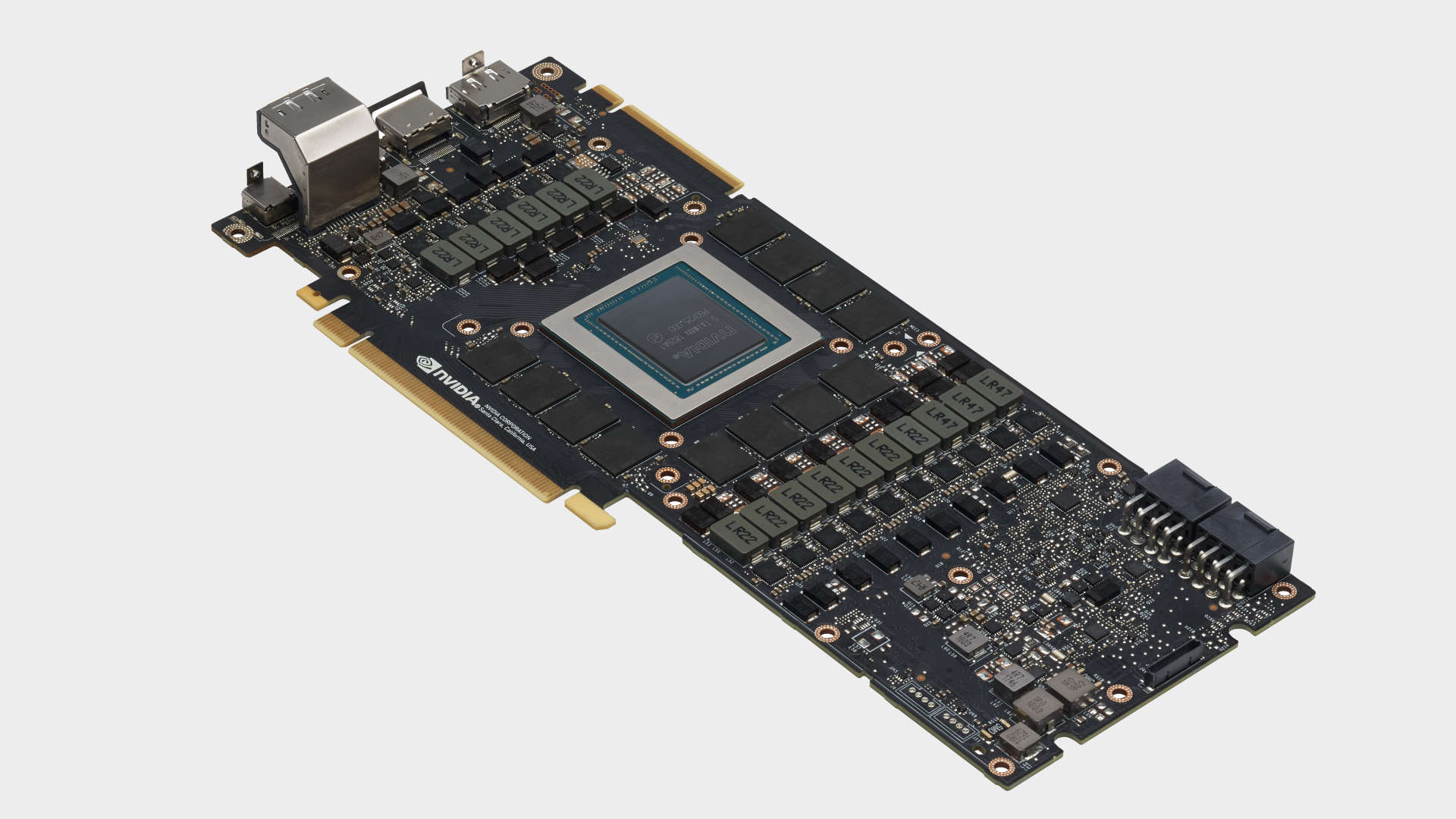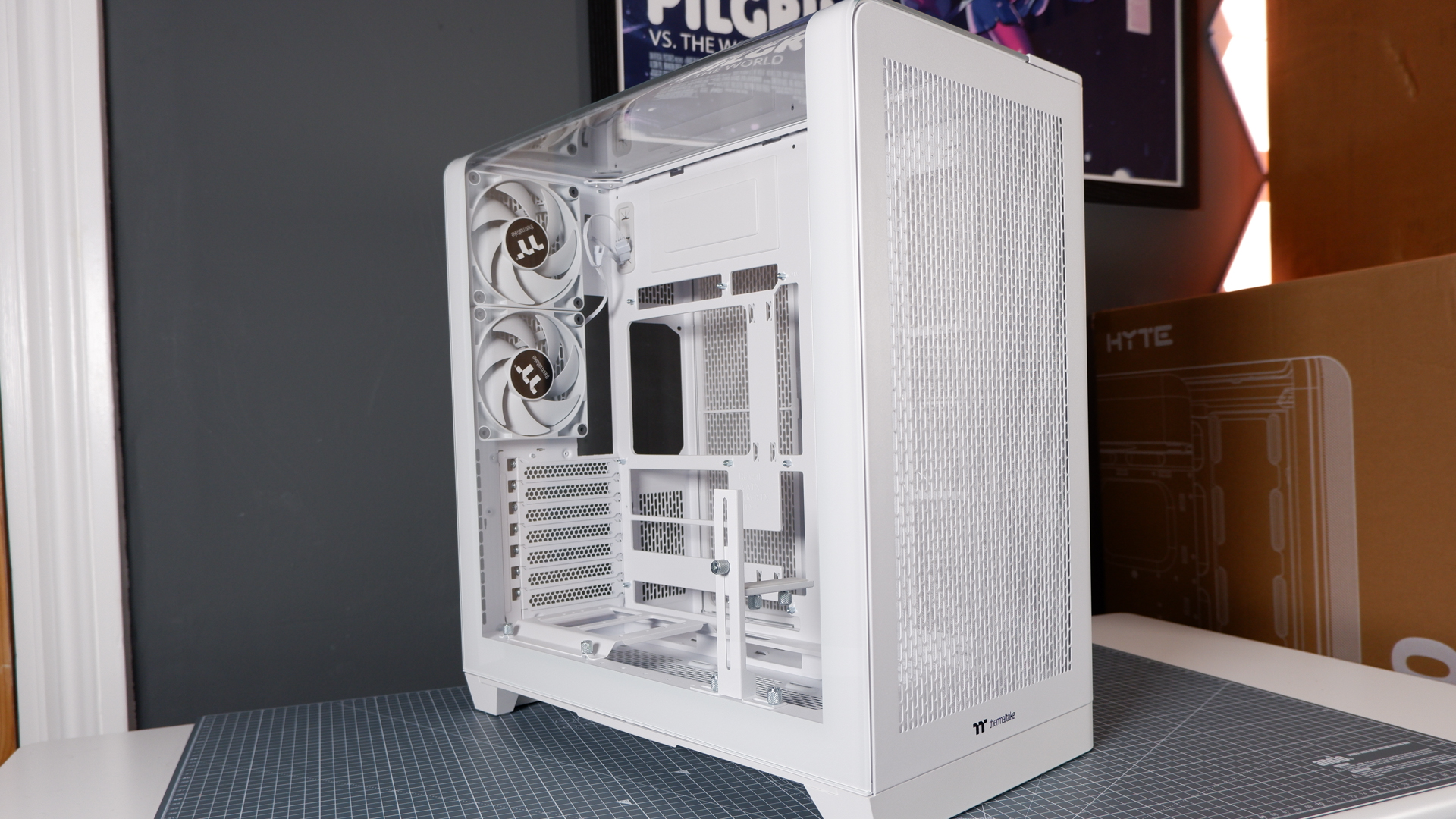Nvidia confirms Ampere will power next-gen GeForce graphics cards
But first Ampere is going to tackle COVID-19

CEO, Jen-Hsun Huang will unveil the Nvidia Ampere GPU architecture today in a delayed GTC keynote presentation—seemingly filmed entirely in his kitchen—but early reports have already gone live detailing the streamlining of its entire GPU range into one unified platform. From gaming, to data centre, to cloud and AI, the Ampere architecture will power every graphics card Nvidia ships over the next year or two.
"Ampere will eventually replace Nvidia’s Turing and Volta chips with a single platform that streamlines Nvidia's GPU lineup," Huang is reported to have said in a recent Ampere pre-briefing. "Unquestionably, it’s the first time that we’ve unified the acceleration workload of the entire data center into one single platform."
Turing is the graphics architecture that's used on Nvidia's current gaming graphics cards, from the GTX 1650 all the way up to the RTX 2080 Ti, and while there had been speculation that Ampere might just be a replacement for the old professional Volta design, it's now confirmed that the GPU architecture being unveiled today will find its home in our gaming PCs.
There's still no hint as to when that might happen, but we're pegging our hopes on an August/September announcement/release cadence.
The only other actual nod to the gaming cards expected to arrive later this year was after a question about what the potential difference might be between the consumer and professional GPU designs.
"There's great overlap in the architecture," Huang is reported to have said, "but not in configuration."
That's not a surprise considering the MarketWatch report suggests that the Ampere architecture, presumably the GA100 GPU going into the DGX A100 servers, is a 7nm design housing over 54 billion transistors. For reference, there are 18.6 billion transistors in the top 12nm Turing GPU, and 21.1 billion in the V100 Volta GPU.
Keep up to date with the most important stories and the best deals, as picked by the PC Gamer team.
Holy hell, that's a lot of transistors.
I mean, 7nm may allow for greater density of transistors in a GPU, but that's going to be one mammoth chunk of silicon, and surely way too pricey to drop some 48 billion transistors into a graphics card going into our PCs.
The first DGX A100 systems have already gone out to researchers, notably the Argonne National Laboratory near Chicago, where Ampere is being put to use trying to explore potential vaccines for COVID-19.
“The compute power of the new DGX A100 systems coming to Argonne will help researchers explore treatments and vaccines," said Rick Stevens, associate laboratory director at Argonne, "and study the spread of the virus, enabling scientists to do years’ worth of AI-accelerated work in months or days.”
That's probably a little more worthwhile than getting real-time ray tracing working above 60fps at 4K.

Dave has been gaming since the days of Zaxxon and Lady Bug on the Colecovision, and code books for the Commodore Vic 20 (Death Race 2000!). He built his first gaming PC at the tender age of 16, and finally finished bug-fixing the Cyrix-based system around a year later. When he dropped it out of the window. He first started writing for Official PlayStation Magazine and Xbox World many decades ago, then moved onto PC Format full-time, then PC Gamer, TechRadar, and T3 among others. Now he's back, writing about the nightmarish graphics card market, CPUs with more cores than sense, gaming laptops hotter than the sun, and SSDs more capacious than a Cybertruck.

